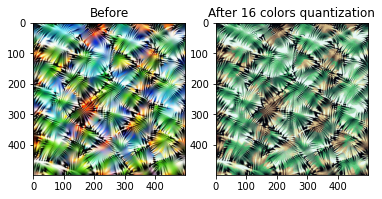
Unclassified list of tricks
2020, Dec 12
I often look for the same answer for the same questions on the internet. This is my way to remember them more easily.
Fill a matrix based on an index map
Typical usage would be : I need to update an image based on a computation that has the same size than my image. Doing a for loop is prohibited. What is the matricial way of doing it ?
# Simulation of the output of an algorithm
# it has labels for all positions
label_map = np.random.randint(0, 2 * 10, (10, 10))
# A black color image
img = np.zeros((10, 10, 3))
# Business logic : pixel whose label has been assigned to 1 should be white
xs, ys = (label_map == 1).nonzero()
img[xs, ys] = (1, 1, 1)
Quantize an image colors
To reduce the complexity of an image when applying other algorithms. Somre advanced methods for quantization are discussed in this stack overflow thread
from PIL import Image
import PIL
import numpy as np
from matplotlib import pyplot as plt
im1 = Image.open("my_img.png").convert("RGB")
im2 = im1.quantize(16)
pix = np.array(im2.convert("RGB"))
print(pix.shape)
plt.imshow(pix)
An example of this processing can be found with this image

Unpacking a list of tuple to a tuple of lists
Pretty common but much more efficient when not using the for loop.
l = [(1, 2), (4, 4)]
x, y = zip(*l)
x
#>>> (1, 4)
Storing and using static files in your python tests
There is a simple way to get your test data with relative paths.
THIS_DIR = os.path.dirname(os.path.abspath(__file__))
test_data = os.path.join(THIS_DIR, "fake_data.csv")